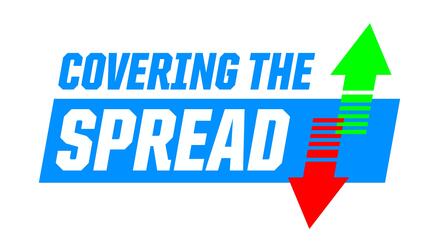Daily Fantasy NASCAR Track Preview: Hollywood Casino 400

With the NASCAR Cup Series moving into the Round of 8, the procedure for setting the starting order is changing once again.
The remaining eight drivers will occupy the top eight spots in the starting grid. The non-playoff drivers will start behind them, using the same algorithm that has been in place for the past few months.
In the past, when the Cup Series has gone to a 1.5-mile track like Kansas, we've said to use two drivers starting in the top 12. They would be the ones most likely to lead laps, and that's what we need in our rosters.
The question becomes whether we need to alter that strategy for Sunday's Hollywood Casino 400. It's a 267-lap race at a 1.5-mile track, a format with which we are hyper familiar. Does that mean we can continue to play things the way we have? Let's check it out.
Learning From Similar Races
Once you add in the race in Las Vegas a few weeks ago, we've got four races this year where the race has been 267 laps long at a 1.5-mile track where the field was set by an algorithm. That's a good sample from which to draw and see how we should play things.
Based on those -- and a little bit of logic -- it does seem as if our best strategy is still rostering multiple drivers in the top eight spots.
Looking at the perfect lineups straight up, it would seem we'd want to skew more toward the back. None of the four perfect lineups had multiple drivers who started in the top eight. The Las Vegas race actually didn't have any.
This would signal that we'd want to favor place-differential over hunting for laps led. But that might be a false takeaway.
The reason here stems from the number of laps led within those perfect lineups. On average, the five drivers provided 164.25 laps led per race. Three of them had at least one driver who led 100 laps, and two of those included a second driver who led at least 50. The bonus points tied to laps led were still a key within the lineups.
For those races, you could get the laps led from deeper in the pack because it's conceivable the fastest car could have started as deep as 12th. But here, with the eight playoff drivers occupying the top eight spots, that's probably the zone where we'll find the race's dominant driver.
With 26.7 FanDuel points available for laps led, we do want to prioritize getting them into our rosters. Doing so this weekend likely means using multiple drivers starting within the top eight spots. Even though it goes counter to what we've seen previously in races like this, it does seem like a necessary alteration.
After that, though, place-differential points are fully on the table. Of the 20 drivers in perfect FanDuel lineups for our four similar races, nine started outside the top 20, and three started outside the top 30. If you see a viable driver starting further back, you can feel free to target them on a track type where passing isn't all that difficult.
This isn't to say you must shoot for place-differential, though. In Las Vegas, there were no drivers who started outside the top 20 in the perfect lineup. This isn't a pack-racing track where the finishing order drifts toward random. Fast cars are going to finish well, and those are the cars that will produce for DFS.
Basically, we want to target fast cars no matter where they're starting. That sounds reductive, but with the way the race shapes up, it's the optimal approach.
It helps that we know who will be fast this weekend. This is the 10th race of the season on a 1.5-mile track, and it's the sixth on a 1.5-mile track with moderate banking. If drivers have been fast on those tracks all year long, they'll probably be able to pump out big speed again on Sunday.
So, for your value plays, dig into their performance at 1.5-mile tracks first. If those drivers have shown life, and they happen to be starting further back, then they're going to be an option for cash games. But if we can't see the path to a good finish based on past performance, it'll be tough to justify them no matter how far back they're starting.
The other takeaway from the perfect lineups is that punting is a tough sell. Only one driver has made a perfect lineup with a salary lower than $6,000, and only two have made it with a salary lower than $6,600. The drivers with those bargain salaries are often there for a reason, and it's hard to see them providing a good finish without the race devolving into chaos. This may mean you'll have to ignore mid-range plays in order to get your two drivers in the top eight, but it's a worthwhile tradeoff with the lack of upside at the bottom of the driver pool.
















